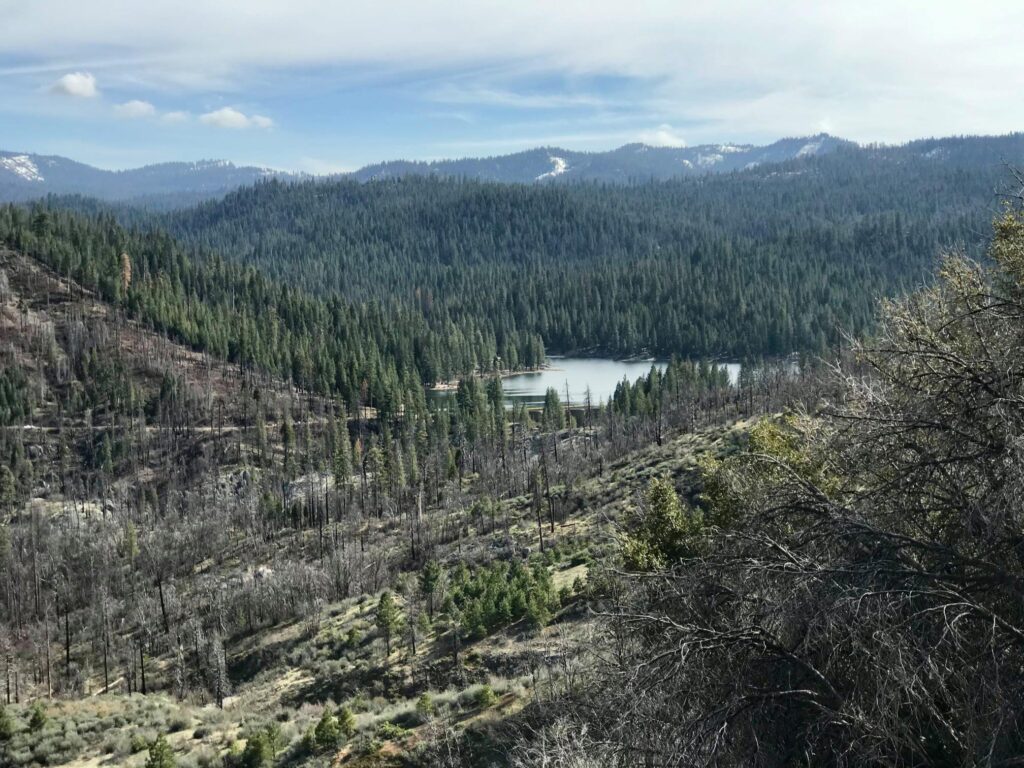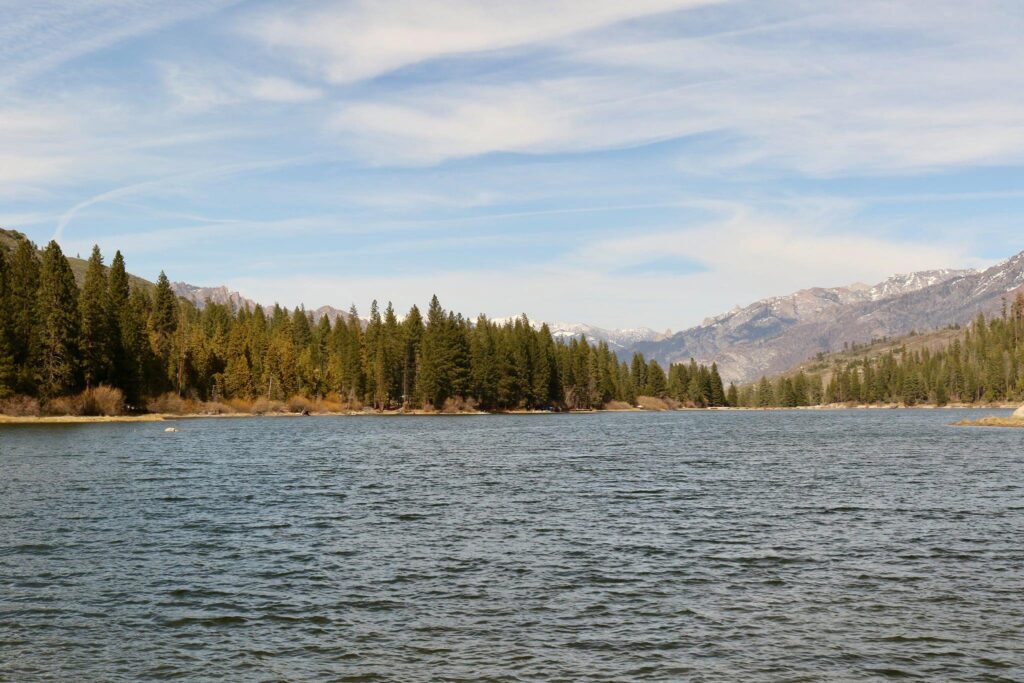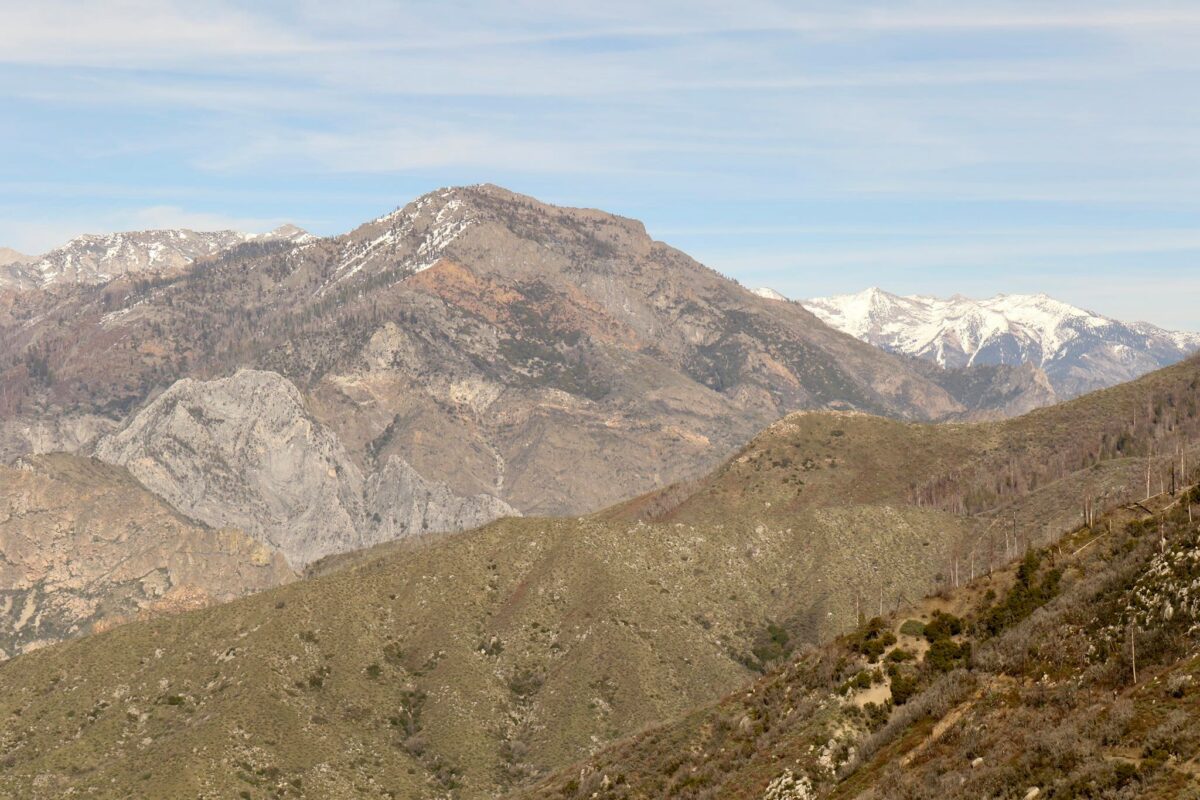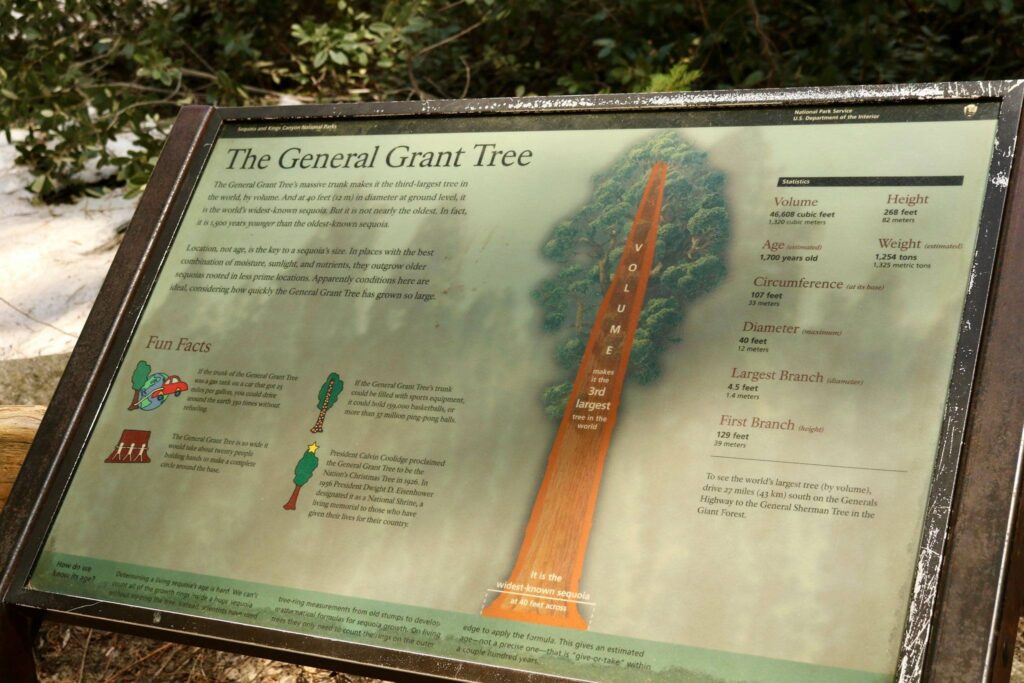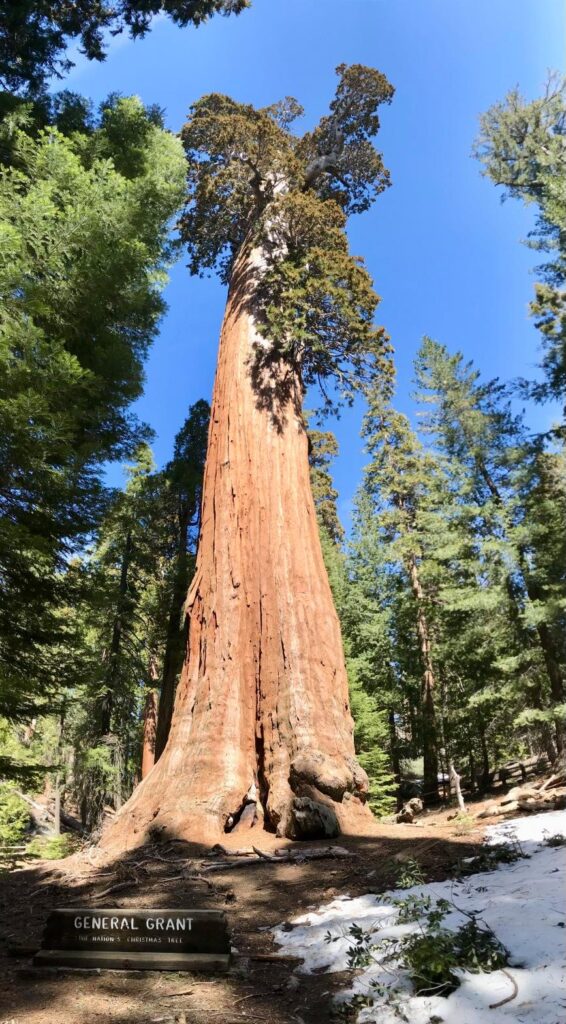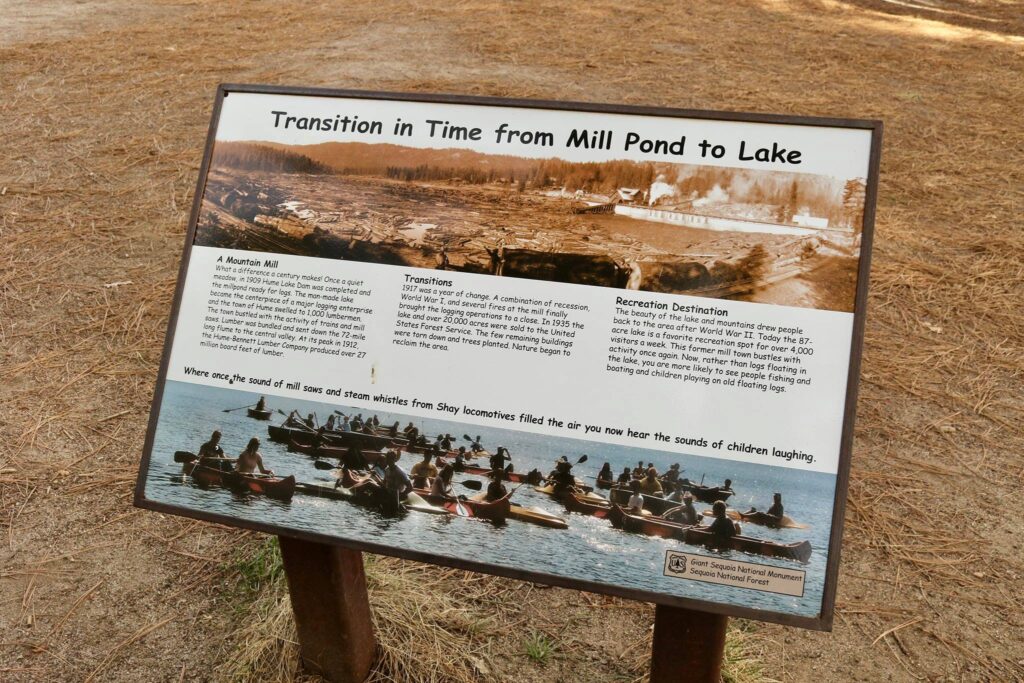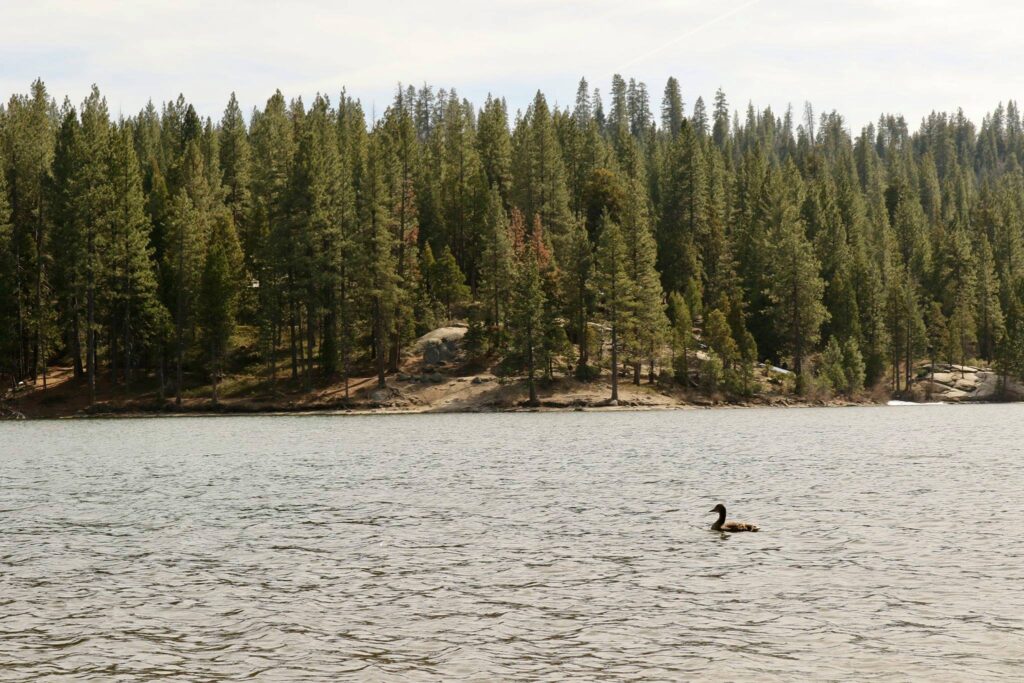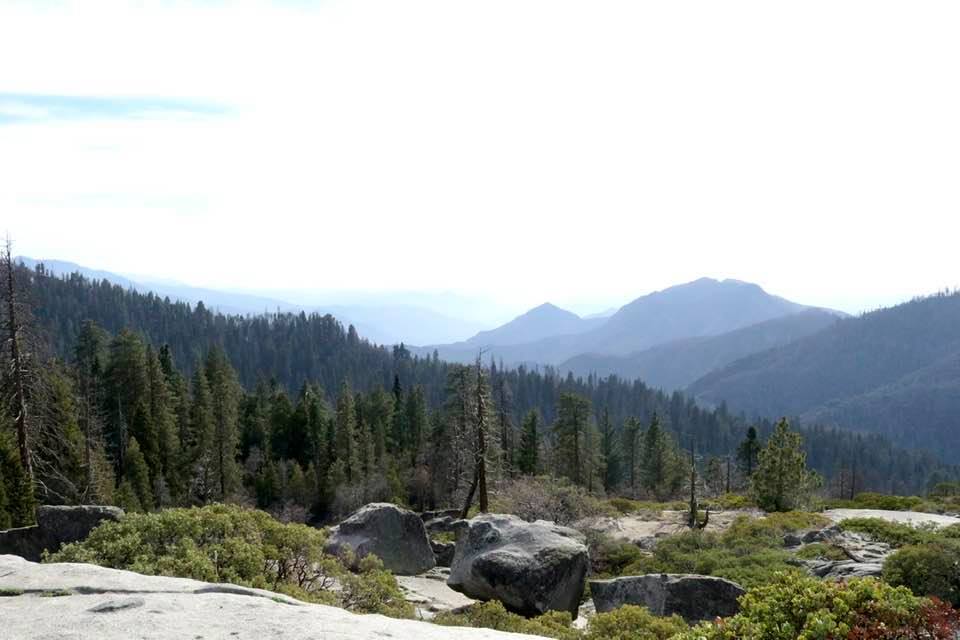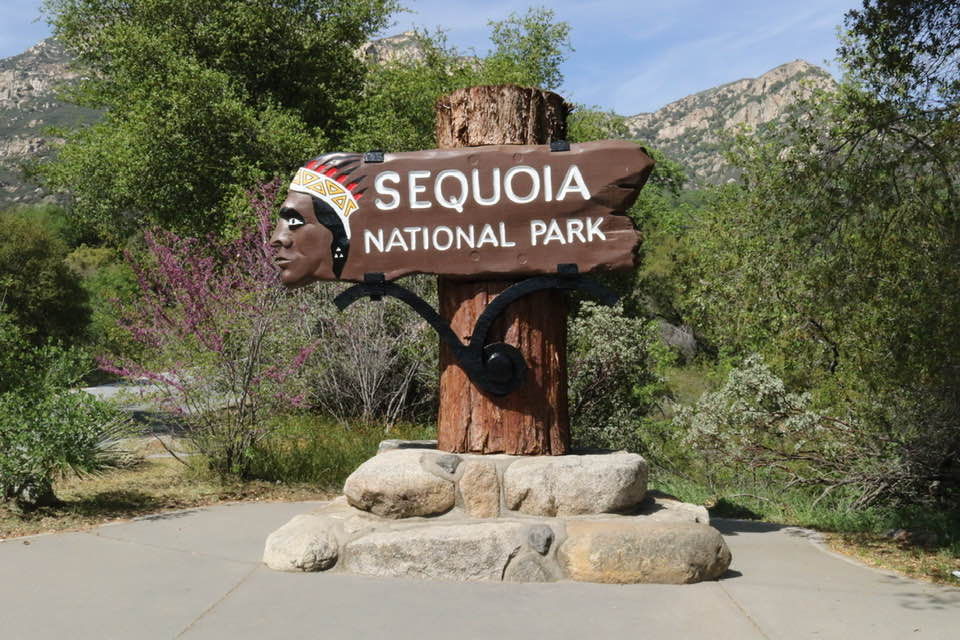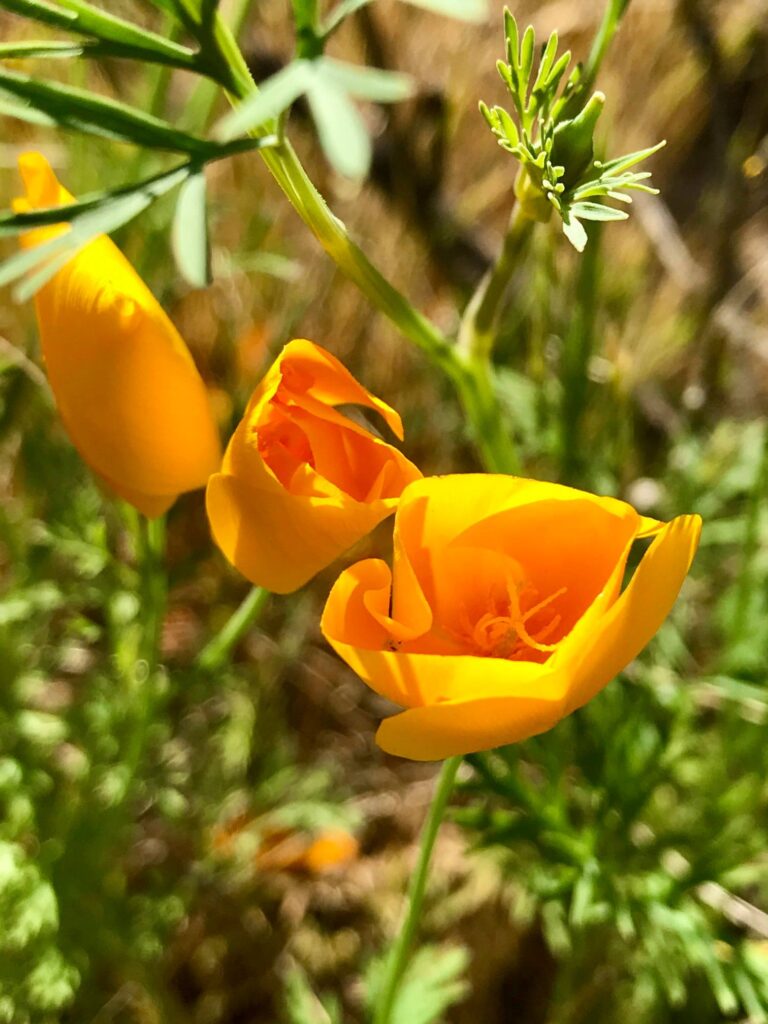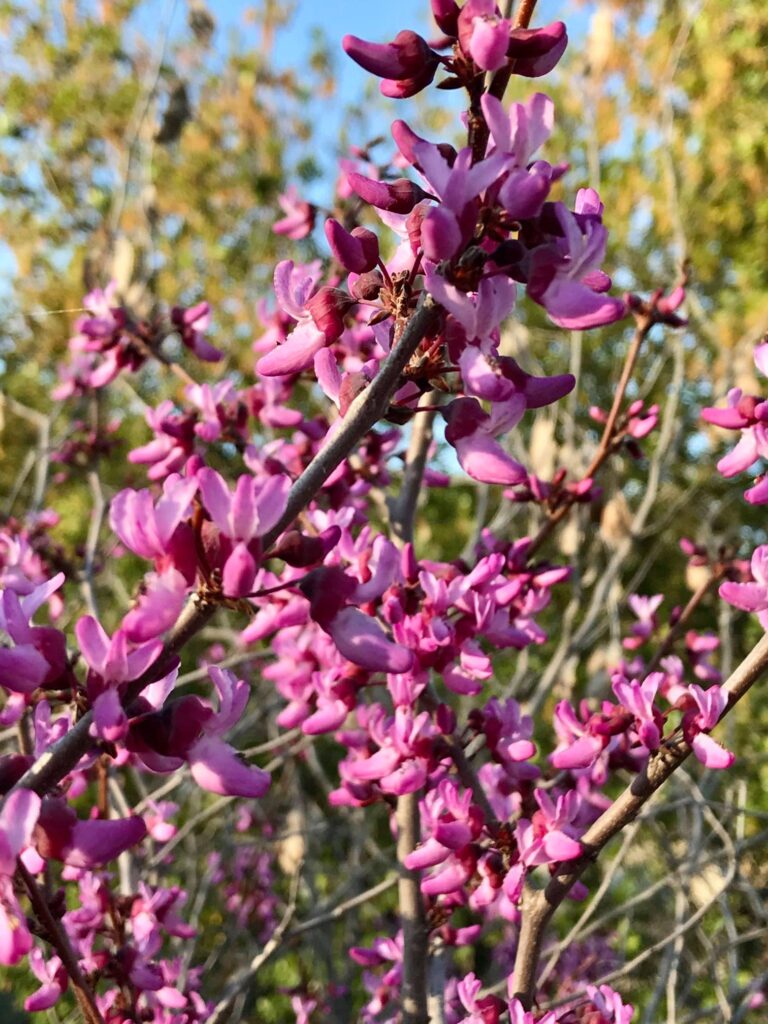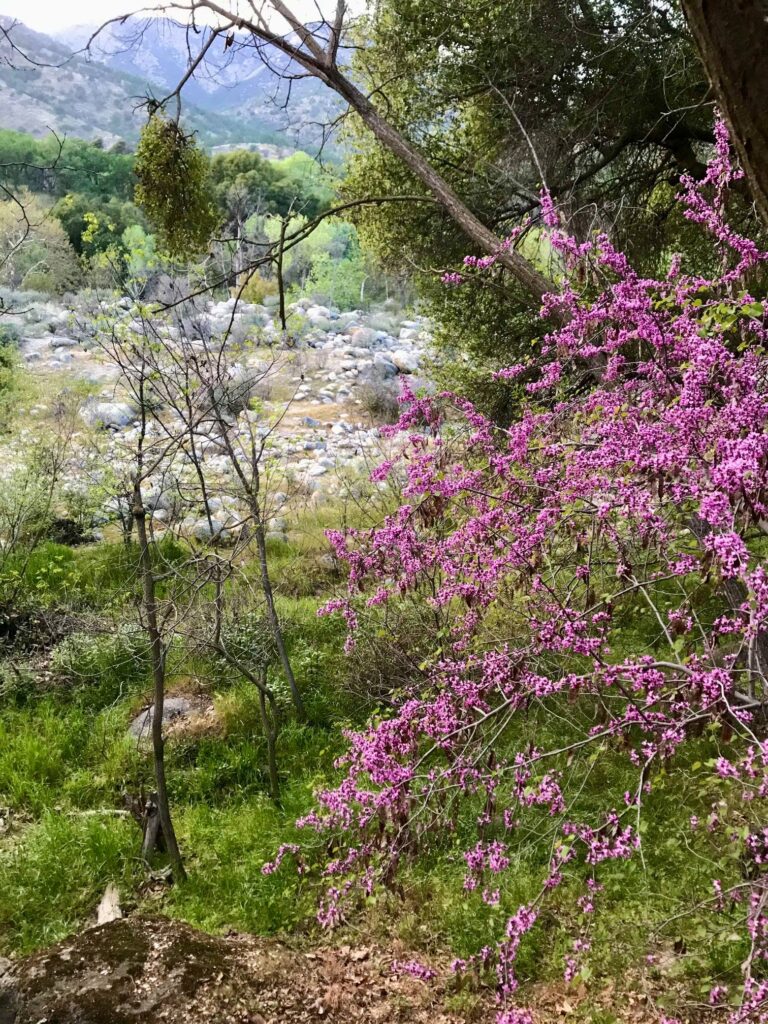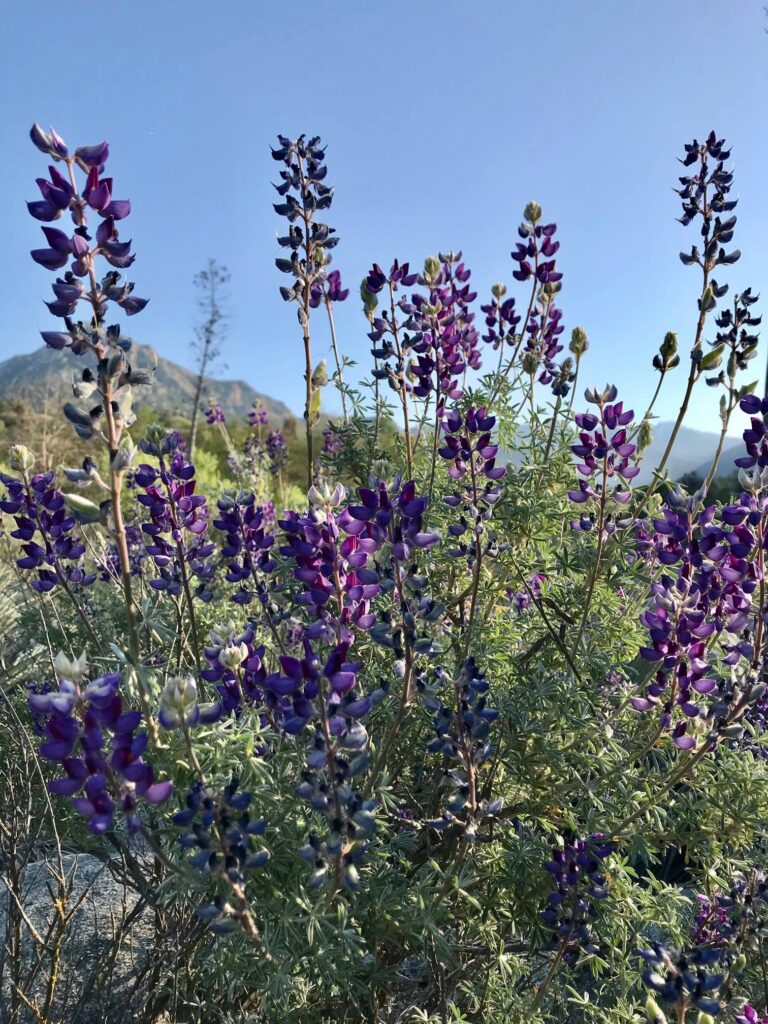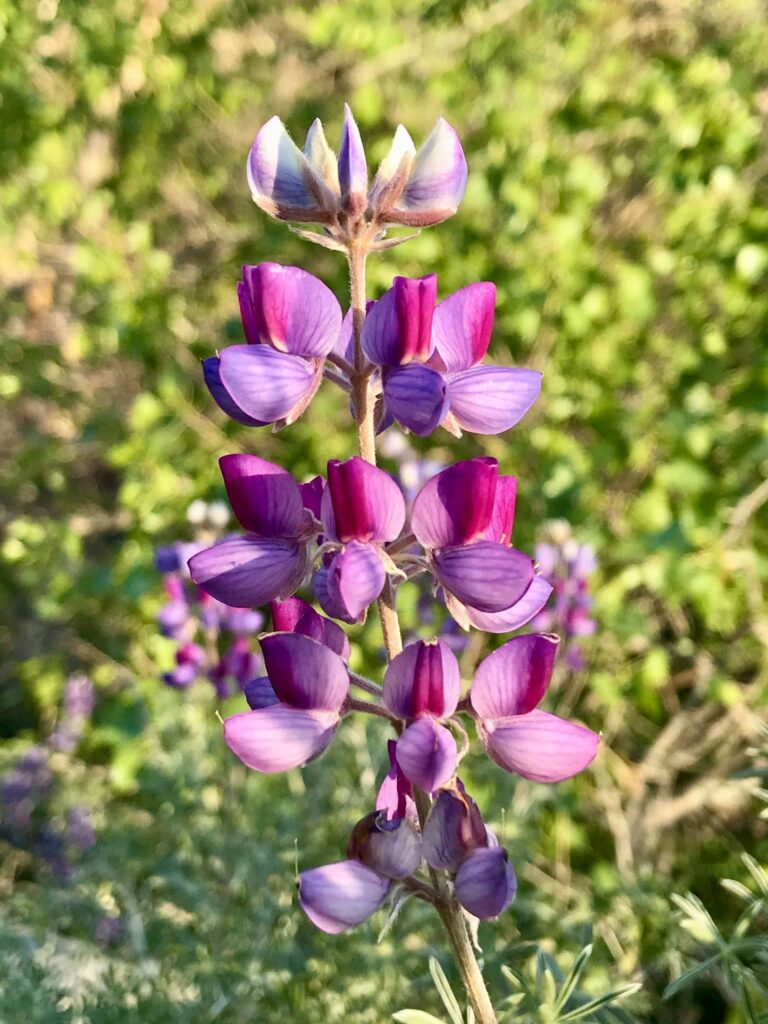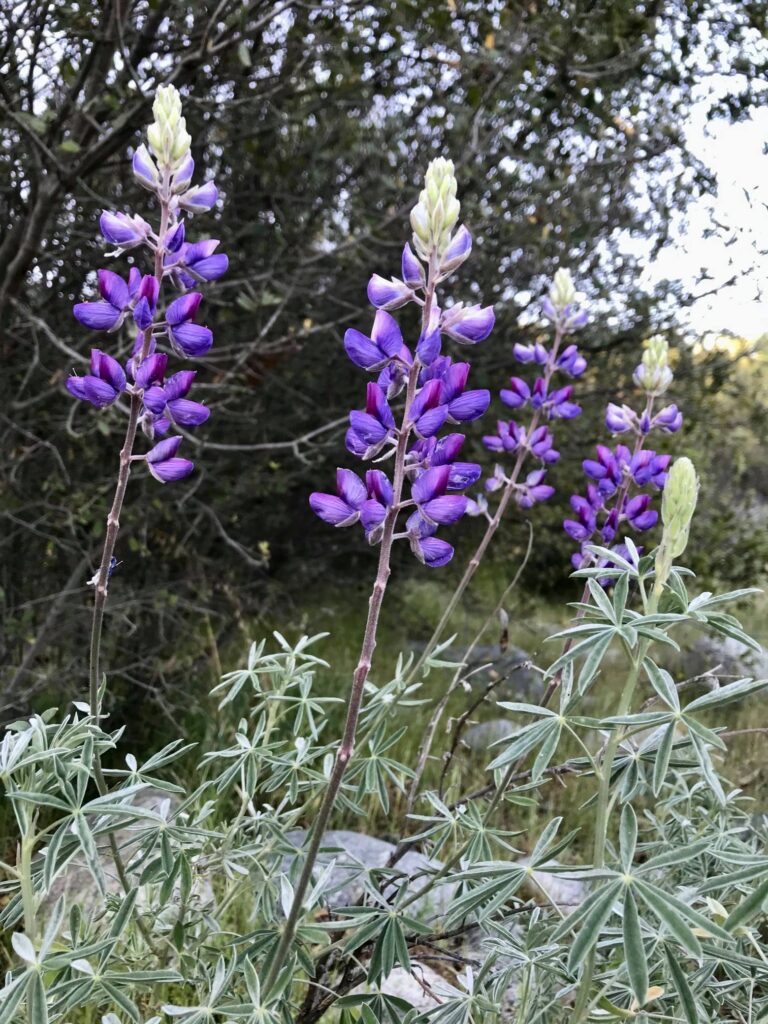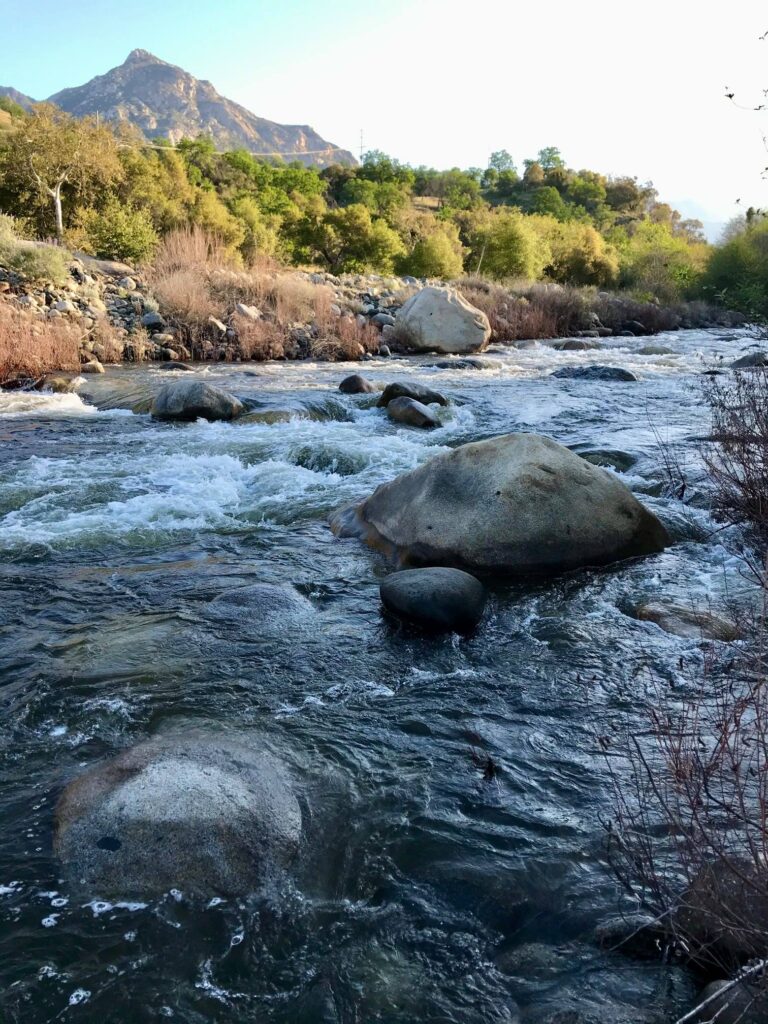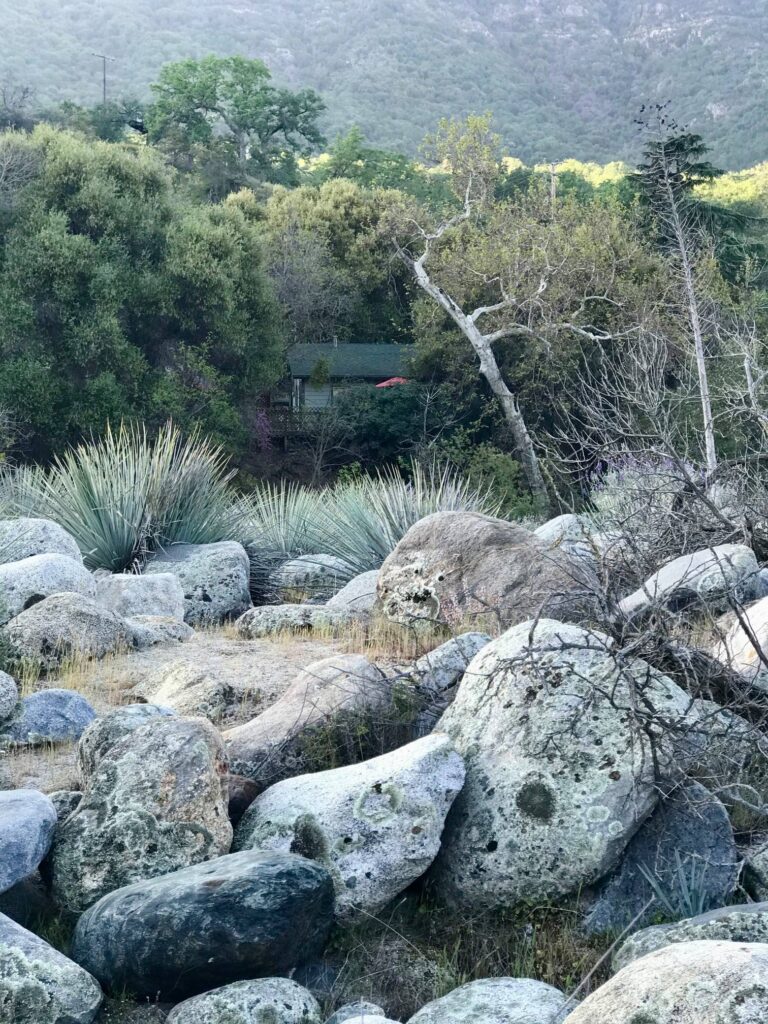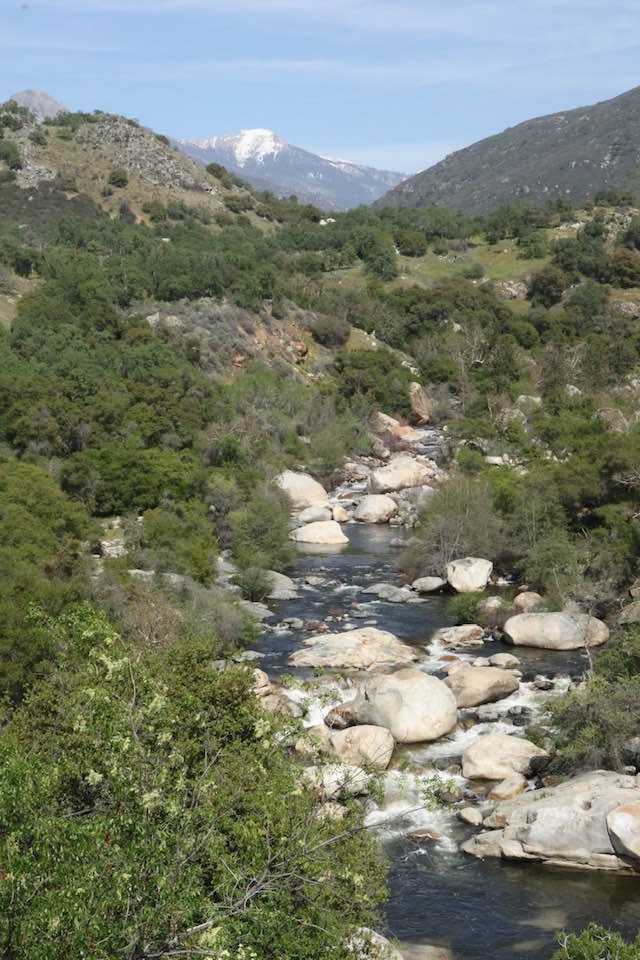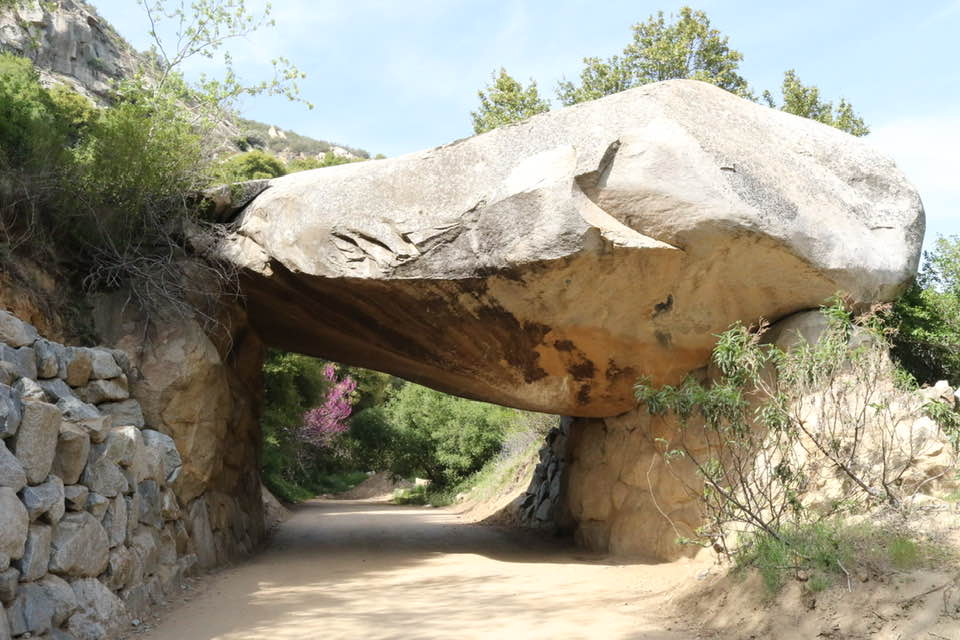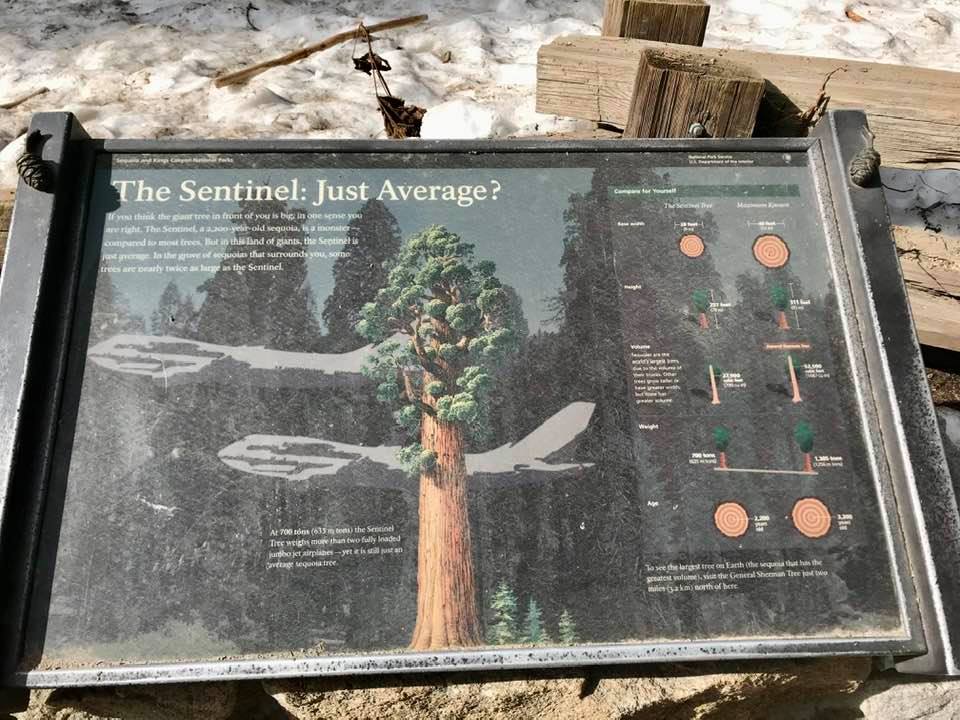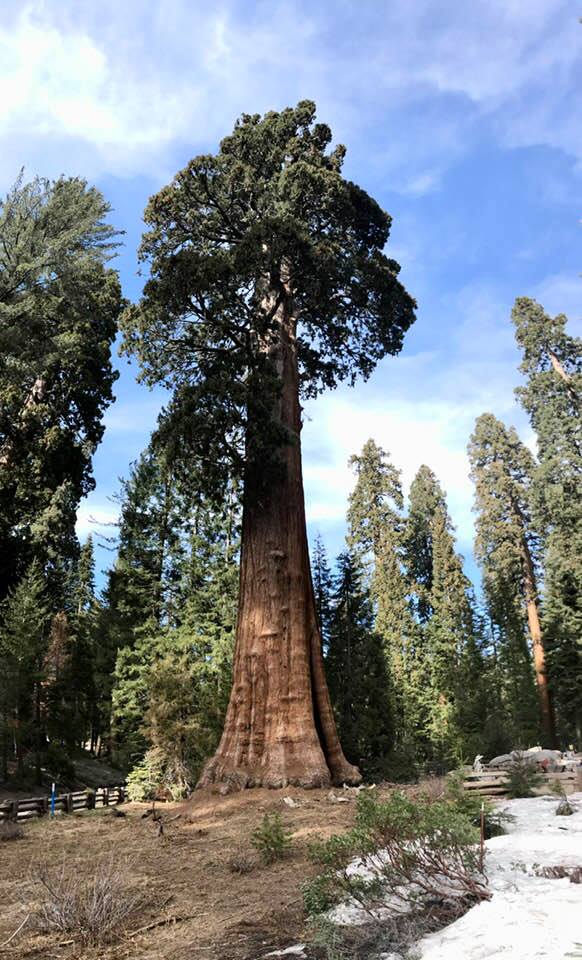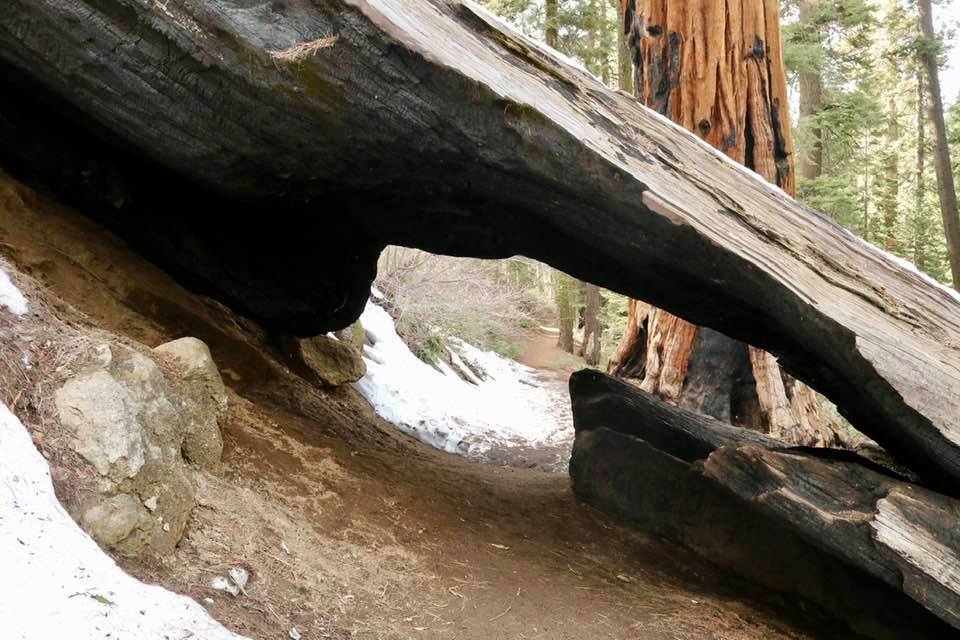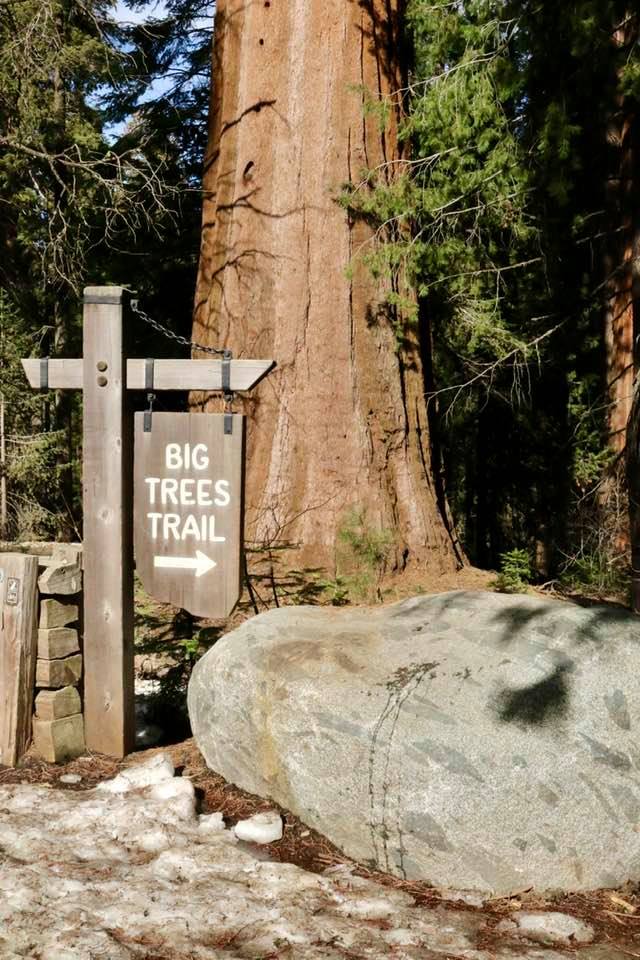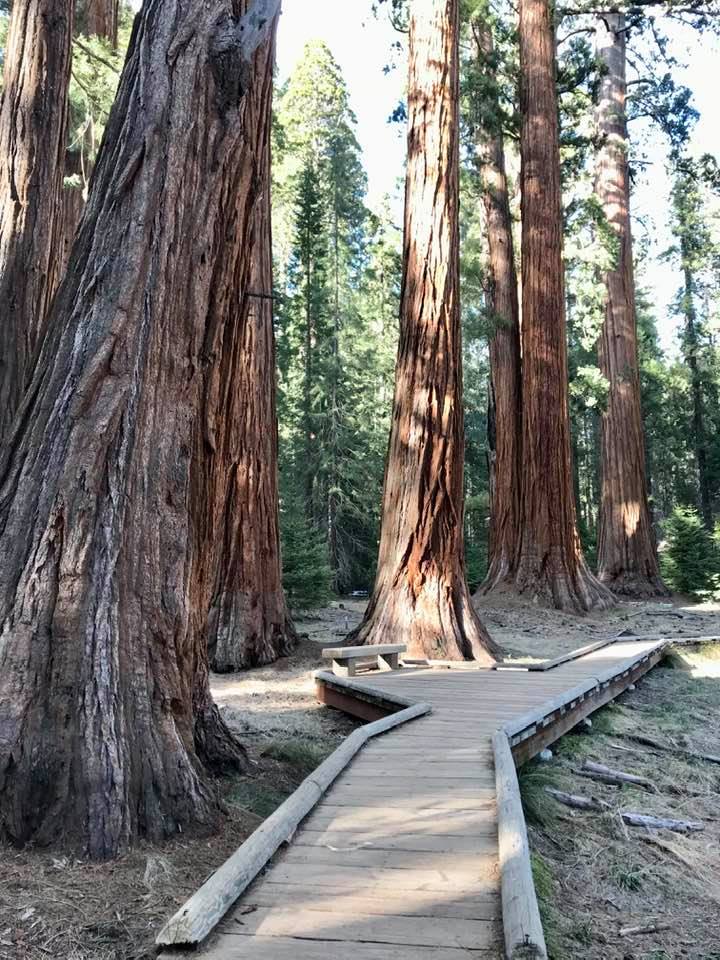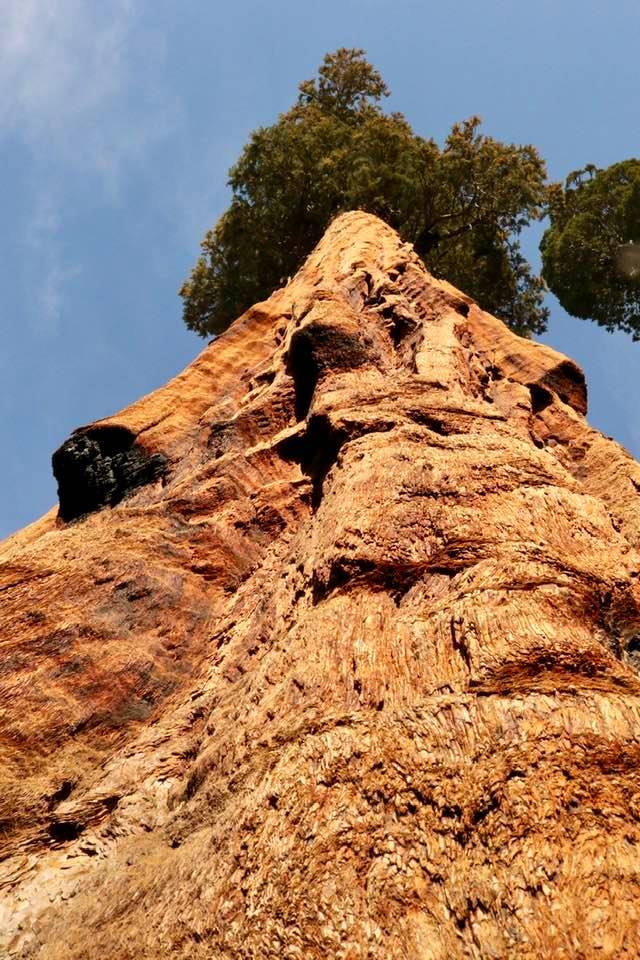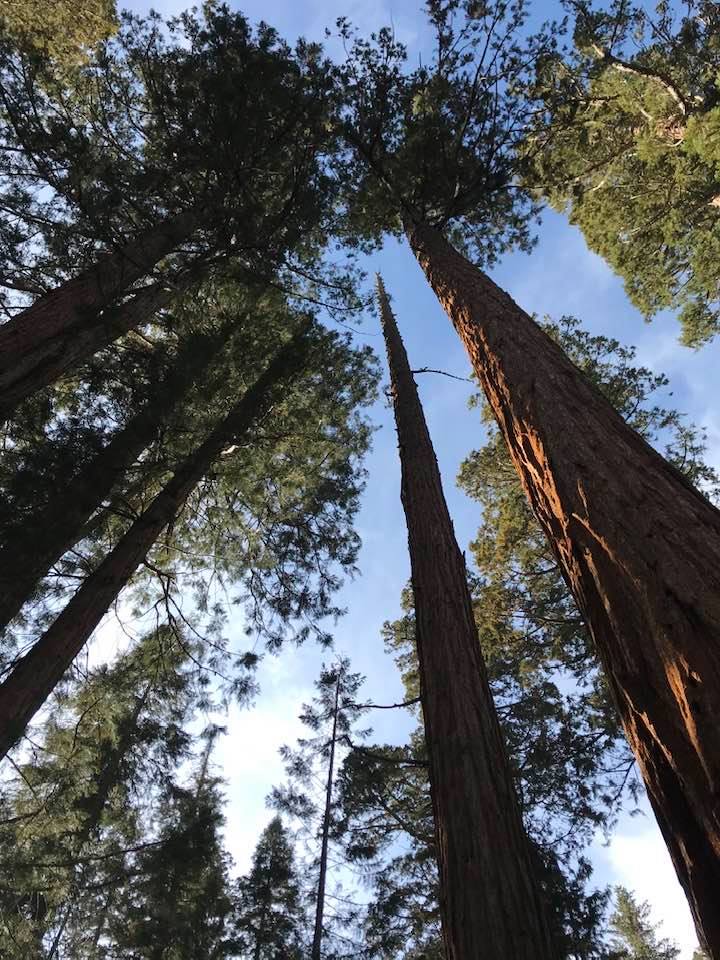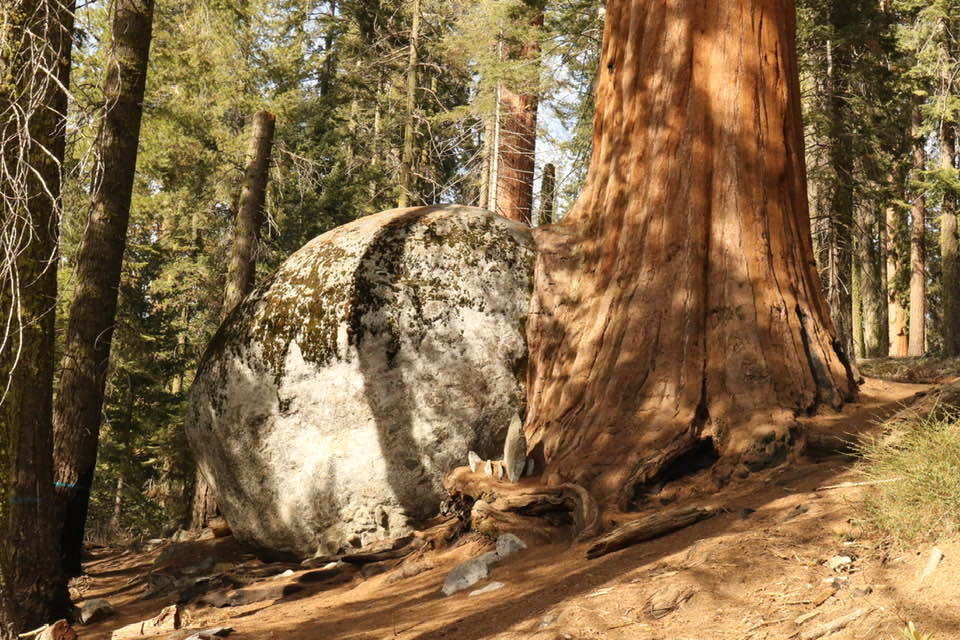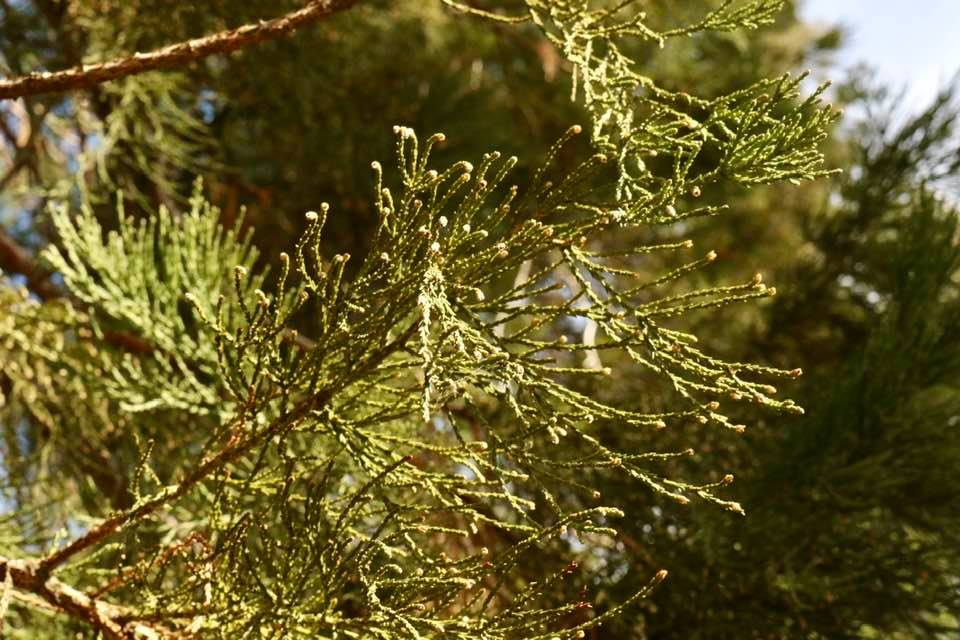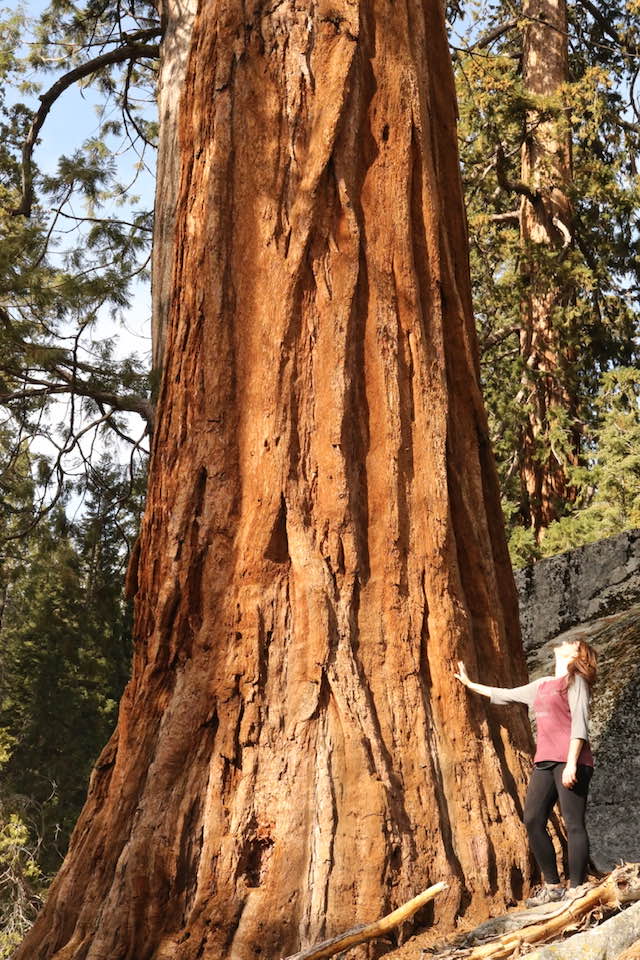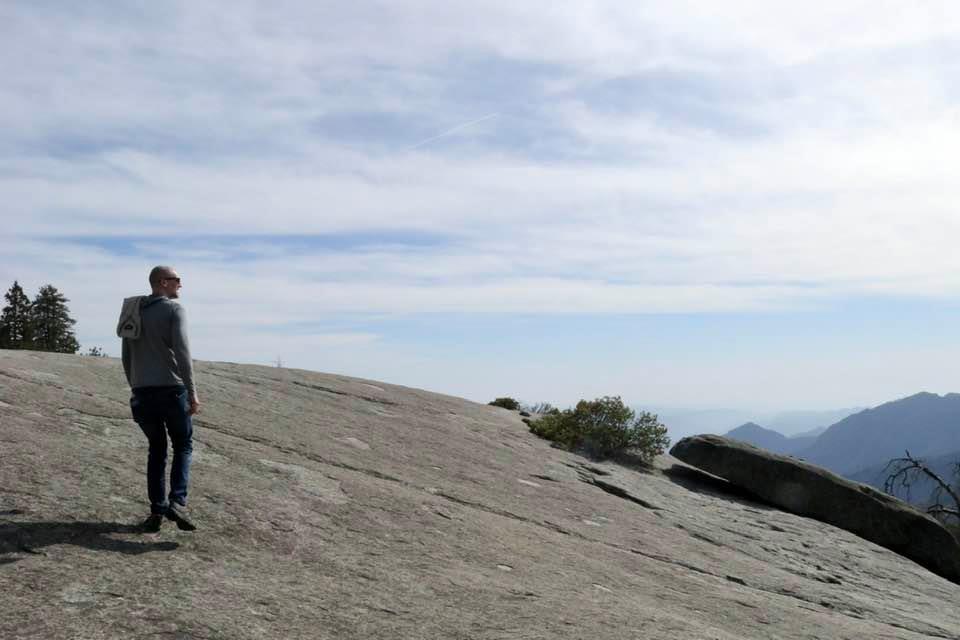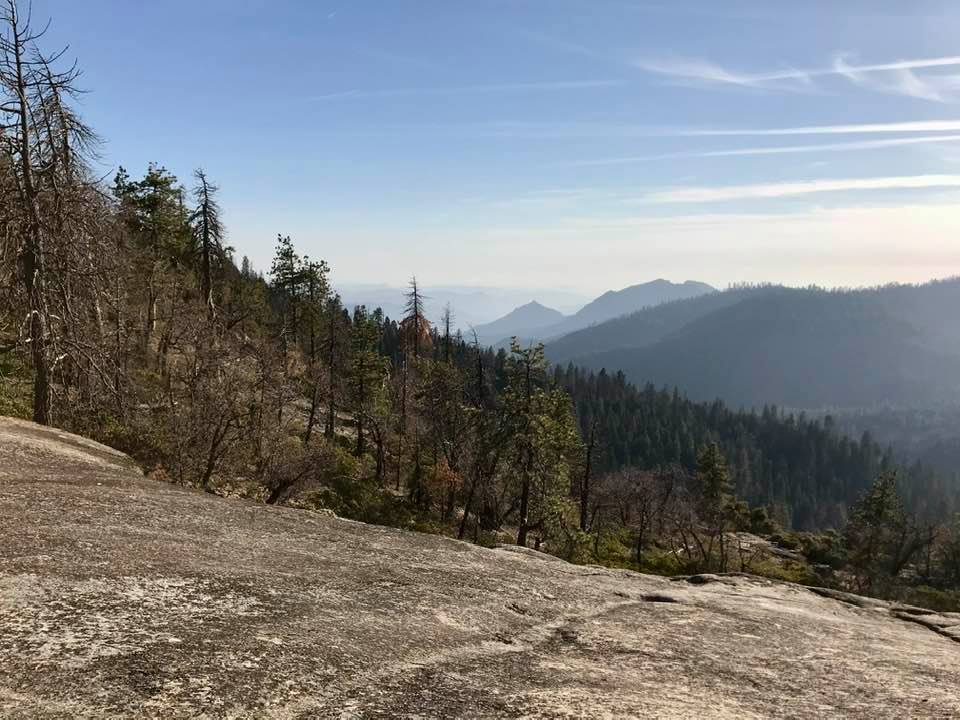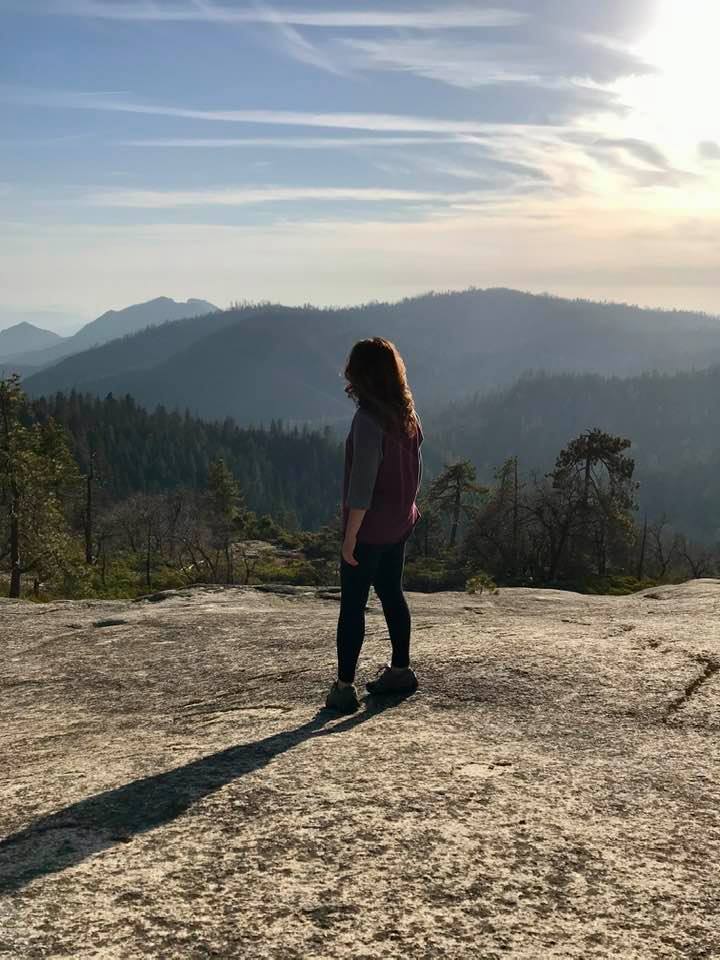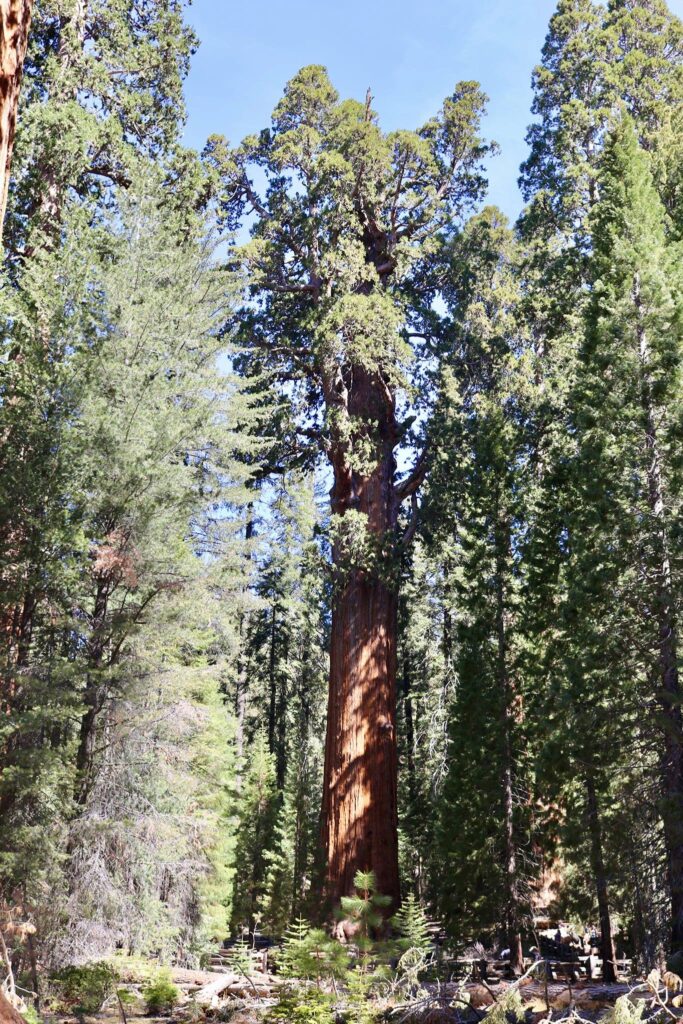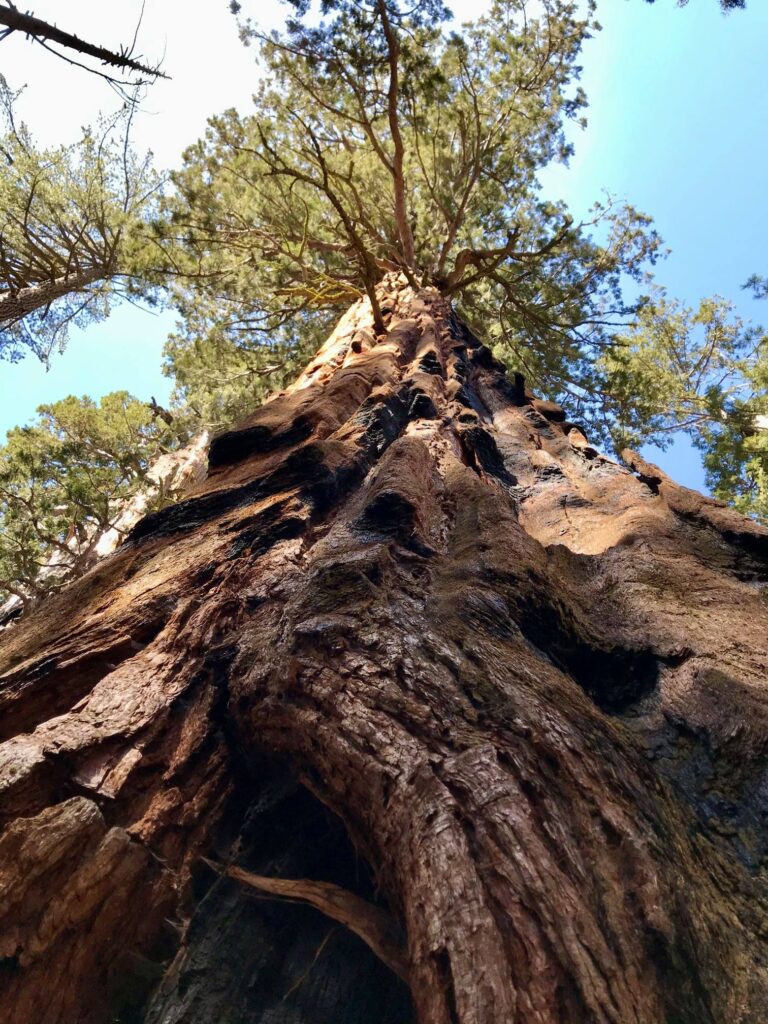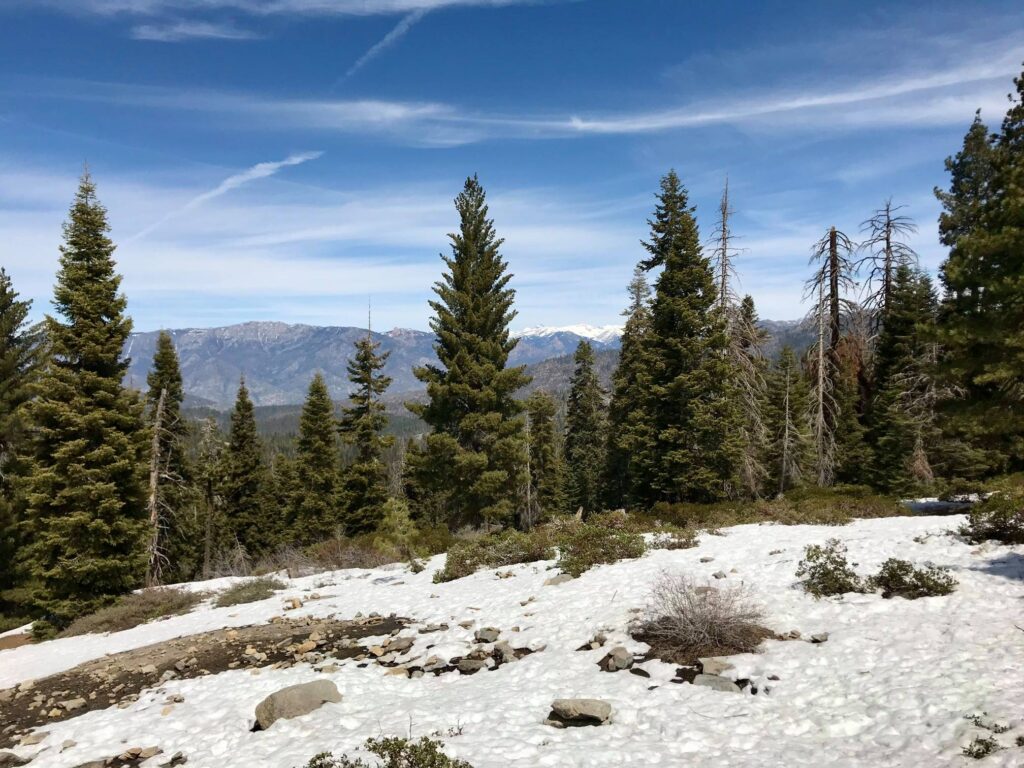
After a couple of days in Sequoia National Park (you can check out that post here), we drove north on the General’s Highway to check out Kings Canyon National Park. I wasn’t even sure if the road connecting the two parks would be open in April, so this drive was a bonus! In preparing for this trip, I read that snow can occur at any moment and can close portions of the road. Even though there was still plenty of snow at higher elevations, the road was clear and the temperatures were in the mid 70’s! Here is what we found to do!
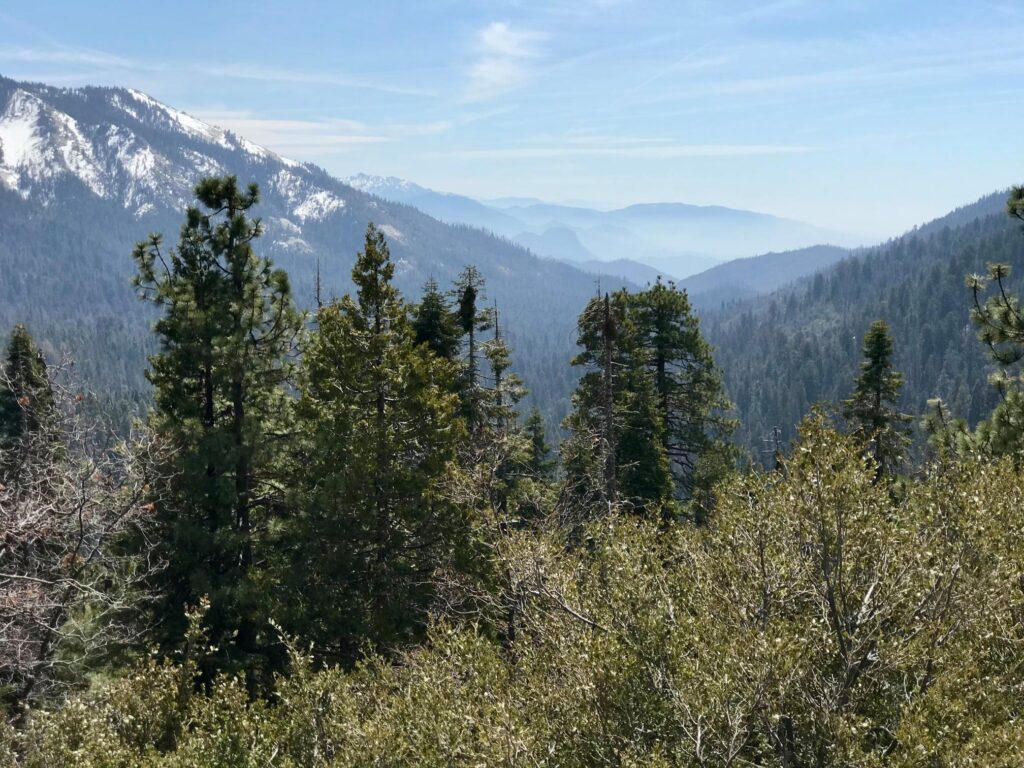
The distance between the General Sherman Tree in Sequoia National Park and Grant Grove and the General Grant Tree in Kings Canyon National Park is only 30 miles but the drive took over an hour. It was very scenic with pull offs for beautiful vistas and tall tree groves. If traveling between the two parks, make sure to allow yourself plenty of time to enjoy the journey.
Grant Grove
Grant Grove is a must see in Kings Canyon National Park. It is also a great stop for food, souvenirs, restrooms. After checking out the aforementioned comfort stops in Grant Grove, the General Grant tree is the next stop to make. You can walk the roughly one mile trail from Grant village or drive to the Grant Grove lot. We chose to walk in order to stretch our legs. This might also be a better choice when the park is busier in the summer and parking is harder to find.
I really enjoyed Grant Grove. It was less crowded than the giant sequoia grove surrounding the General Sherman Tree. The General Grant tree is listed as the 2nd largest tree in the world by volume, though this is based only on the trunk. If the branches were considered, another tree found in Sequoia National Park would bump General Grant to third.
Also on this trail is the Fallen Monarch. It is an enormous sequoia that can be walked through and nearby interpretive signs show people have been doing this for a long time!
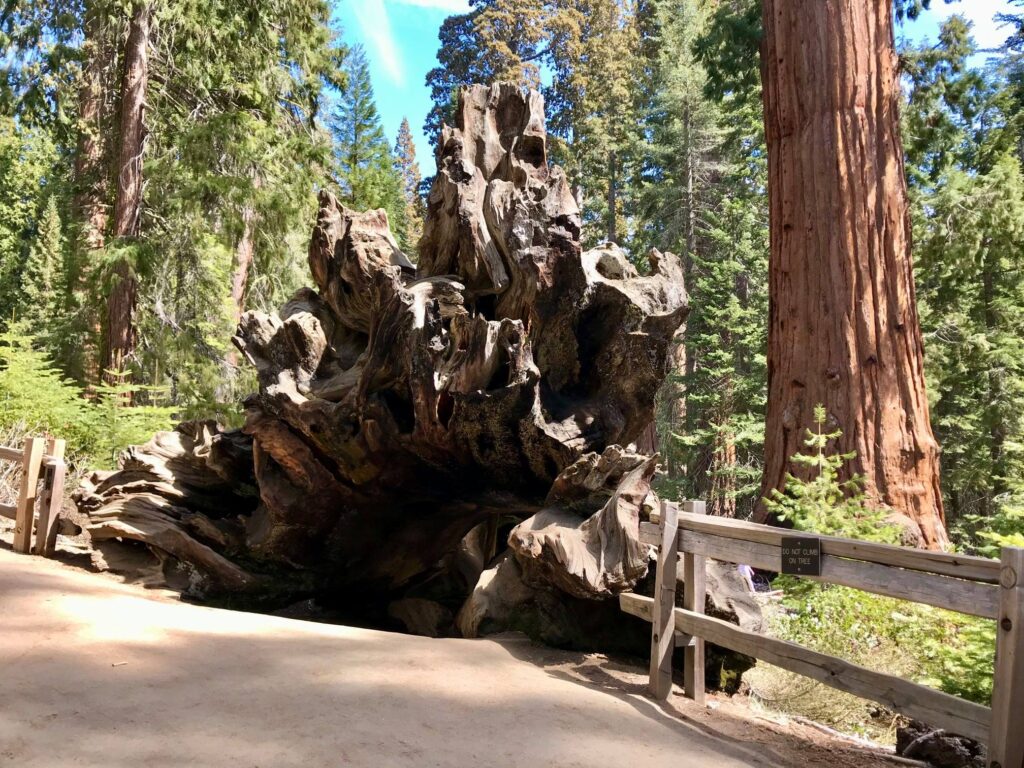
We headed further north until we reached the entrance to Cedar Grove. Being only April, this road wasn’t open yet but we were surprised to find the road to Hume Lake was and we decided to follow it. This was a great idea! After driving a short distance there were some pull-offs that lead to spectacular views of the canyon and the road to Cedar Grove.
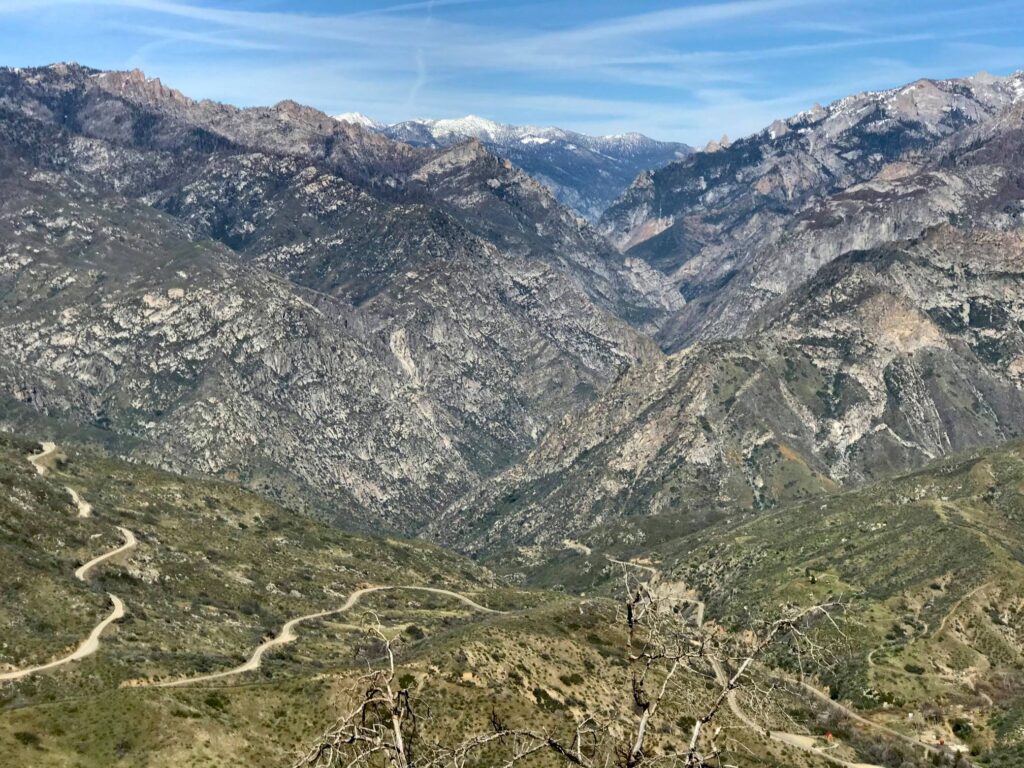
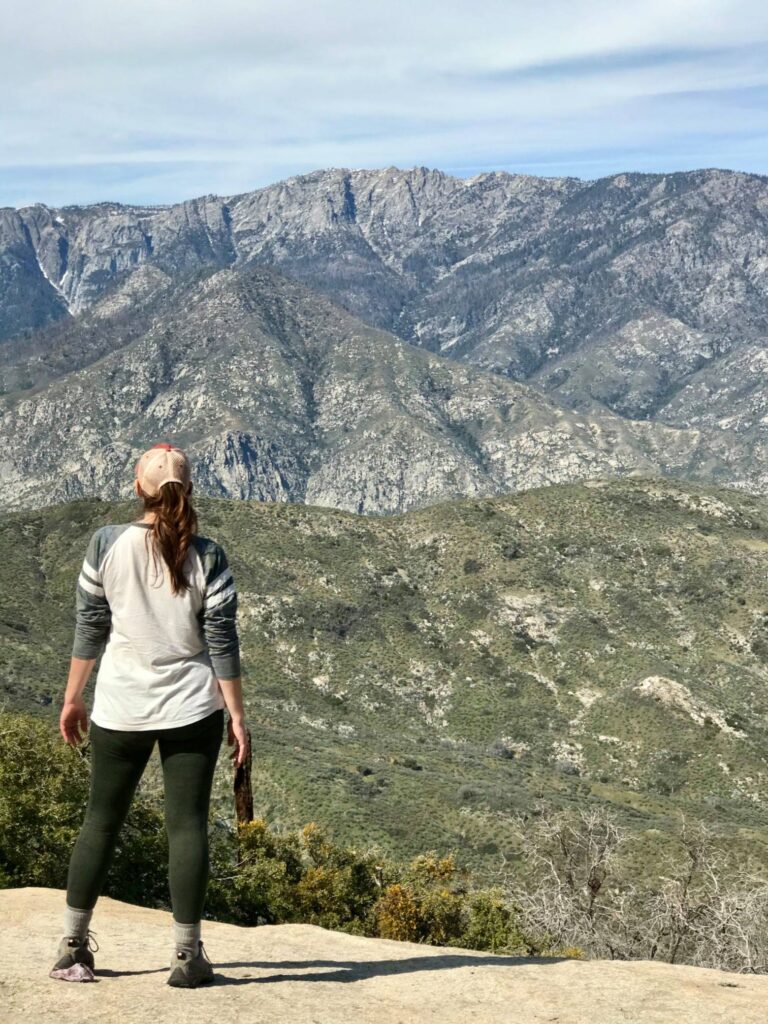
Hume Lake
After great views into the canyon, the road descended in elevation before arriving at Hume Lake. This lake was formed when a dam was built by logging interests in the area in the early 1900’s. Photos near the lake show what it looked like choked with logs. When logging ended and the surrounding area was reclaimed by nature, the lake became a destination for recreation. Today it is a fantastic place to enjoy kayaking, standup paddle boarding, or just some quiet reflection in nature.
